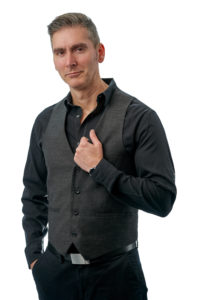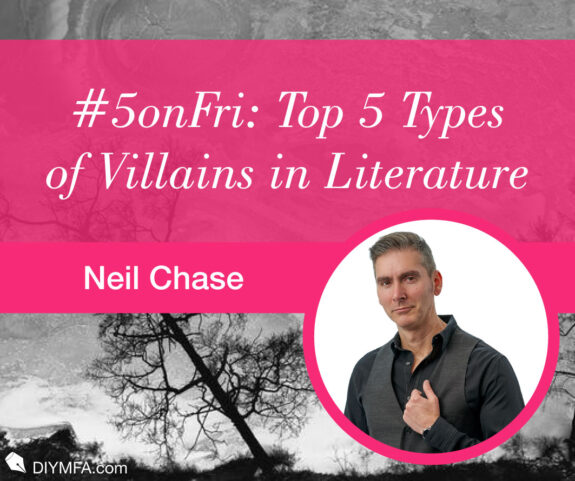What are Villains in Literature?
A villain is, by definition, an evil or immoral character intent on harming others. In literature, these characters portray evil and immoral behavior while also providing readers with an antagonistic force or bad guy – a figure against whom to root.
They are often presented as self-serving or selfish, especially when it matters the most. Their own survival ultimately trumps everything else and can typically be a reason why they fail in the pursuit of their goal, while the hero succeeds in being willing to sacrifice everything for the same goal.
Villains can be motivated by greed or lust or pride, or self-preservation, or they could simply enjoy the act of hurting others. This is the simplest type of adversary because, technically speaking, they don’t need a motive to do what they do.
But giving them a reason for being who and what they are will add complexity to storylines, as they provide tension and difficulty for the heroes of stories, making them work harder for their goals.
Villains often have deep-seated motivations and reveal something about human nature, which makes them attractive for readers to analyze. Moreover, many villains have secrets and pasts that draw readers’s sympathy, adding complexity to the story.
In literature, villains create compelling stories through conflict and challenge traditional notions of morality, and this brings out strong emotions in readers.
What Are the Top 5 Types of Villains in Literature?
Though there are many villain archetypes, these are my top 5 picks:
The Trickster
The trickster villain, who relies on cleverness and manipulation, is one of literature’s top five types of villains.
Think of characters like the Joker, Loki, or the Cheshire Cat from Alice in Wonderland – they rely on deception and wicked cunning to get their way.
The Trickster often makes a deal with the protagonist, appealing to their needs and desires, but the price for the agreement is always higher than the main character realizes. They’re an incredibly entertaining addition to books and movies, always finding ways to throw a monkey wrench into plans and add more excitement and drama.
They may seem infuriating initially, but eventually, their motives become clear – they are simply out to prove their brilliance and superiority over the hero. Most often driven by greed or jealousy, they typically want something from the main character that they would otherwise be unable to get on their own.
The Trickster is brilliant and fun but lacks a moral compass, and is thereby perfect for adding nuance and richness to the world of literature!
The Evil Overlord
For anyone familiar with the great works of literature throughout history, the iconic Evil Overlord has become a symbol in its own right for an antagonistic force that brings about destruction and chaos.
From J.R.R Tolkien’s Sauron to Count Dracula to Emperor Palpatine from Star Wars and the Wicked Witch of the West in The Wizard of Oz, this type of ultimate enemy stands out for their power and sagacity in crushing all who oppose them!
The Evil Overlord is among the most despicable of villains – one might even say they are evil incarnate. Typically offered with little backstory, their motives are nothing short of total domination, and they perform acts of evil because they can. They have no redeeming qualities, they fully embrace their nature, and they are driven only by their own selfish and impure desires.
As such, it’s often their unchecked hubris that proves to be their undoing through an act of extreme courage by the hero.
Having said that, the allure of evil overlords in literature remains as captivating as ever. This intelligent and ruthless character type presents a formidable challenge with their immense power and wicked cunning, making them a challenging foe for the hero to defeat.
Indeed, when these powerful villains are finally vanquished, it’s always cause for joy and celebration by the characters within the story.
The Bully
From power-hungry tyrants to heartless manipulators, villains in literature come in all shapes and sizes.
One of the most common types is the Bully – whose physical or emotional abuse threatens and intimidates their victims.
This villain allows readers to explore themes such as justice and to experience courage and sympathy by seeing how very human characters endure incredible hardship and prevail.
This is a universal archetype, as most people have had real-life experience with a bully figure. Audiences can relate, with fairly little explanation needed for them to understand why this character poses a threat.
Rather than using complex high-tech devices or mastermind plots – these villains’s strength lies in the power of their imposing words and actions. They have an inherent need to display their dominance over the main character through strength and cruelty to prove their superiority and mask their shortcomings and fragile egos.
Some famous examples include Draco Malfoy from the Harry Potter series, Nurse Ratched in One Flew Over the Cuckoo’s Nest, and Miss Trunchbull from Matilda.
The Corrupt Politician or Authority Figure
The Corrupt Politician or Authority Figure is a villainous character trope explored in many genres throughout literature.
From the wicked orphanage owner Miss Hannigan in Annie to the tyrannical Captain Bligh from Mutiny on the Bounty and Alonzo Harris in Training Day, these villains are often seen as morally bankrupt figures who may have started as decent people, but whose unchecked authority has corrupted them. They command an organization or institution with an iron fist and little remorse – seeking their own agenda while taking advantage of those they rule over.
As characters, they help build tension and drama, giving the protagonists clear-cut obstacles to overcome to achieve their desired goal while inspiring readers to explore tales of agency and justice.
The Equal
Not all villains are created equal, unless they are compared with the hero.
One of the top categories of villains is the Equal – often presented as the mirror image of the main character. They share the same skills, knowledge and/or savvy, but their ethics and morals are polar opposites.
Whereas the hero is ultimately presented as moral, brave and just, the Equal is often shown as immoral, cowardly, and deceptive. On paper, they have everything it takes to win the conflict, but their lack of compassion and unwillingness to sacrifice tends to be their undoing when it matters the most.
Unforgettable examples include General Zod in the Superman comics, Saruman in The Lord of the Rings, and Renee Belloq in Raiders of the Lost Ark.
Conclusion
There are dozens of different types of villains out there, each with their own quirks and motivations. As a writer, you get to find the most compelling villain type for your story. And as the saying goes, the hero is only as good as the villain.
After all, without a good villain or antagonistic force to drive the conflict, you can’t have a good story. So make yours memorable!
Do you have a favorite type of villain? Let us know in the comments below!

Neil Chase is an award-winning novelist, screenwriter, actor, and storytelling consultant with extensive experience in a variety of genres, including action, sci-fi, drama, horror, and comedy. Neil has won over 90 international writing awards and is most proud of winning the FilmMakers International Screenwriting Awards Grand Prize.
Neil’s screenplays have been produced for film and TV, and he is the author of the award-winning horror-western novel Iron Dogs.
When not working, he’s drawing inspiration from his amazing family, thinking up new worlds and adventures, and helping aspiring authors find the best tools for writing and follow their dream of writing something truly amazing.
You can find him on his website: https://www.neilchasefilm.com or follow him on Facebook, Instagram, TikTok, Pinterest, and Linkedin.







